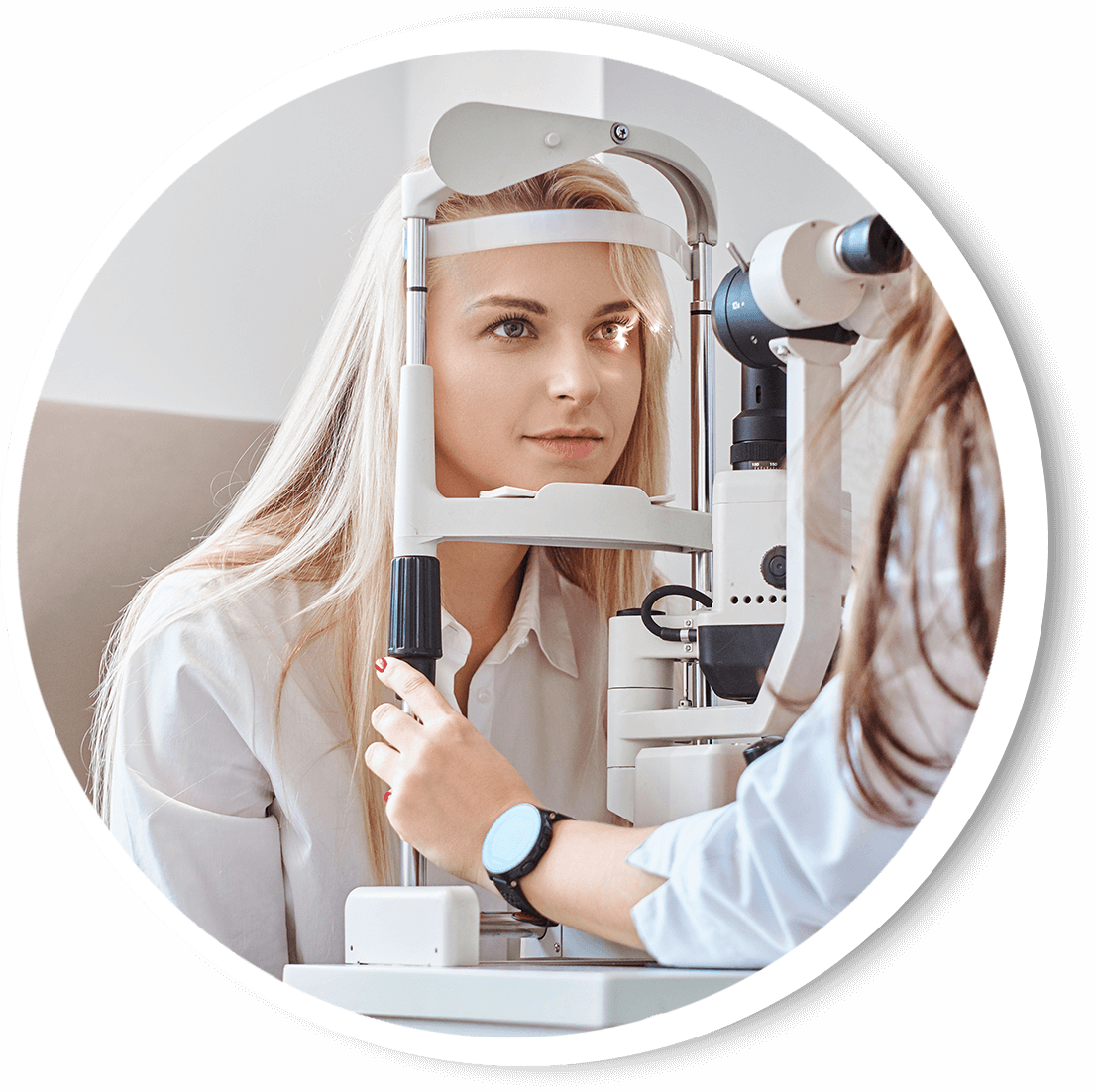Common Eye Disorders
Common Eye Disorders
According to the CDC, more than four million Americans suffer from eye disorders that cause poor vision or blindness. While many of these disorders are age-related, some may be linked to genetics, related health problems, environmental conditions or other factors. Fortunately, most eye disorders are treatable with an early eye exam and diagnosis.
Gulf Coast Vision Center offers low vision eye exams for common eye disorders. We will assess your symptoms, identify the cause and recommend the proper treatment for the disorder. Don't wait for your disorder to worsen before you see a doctor. We have five locations in Northwest Florida, so get in touch today so we can help you get the treatment you need to restore or preserve your vision.

What Are the Most Common Eye Disorders?
Refractive Errors
Refractive errors are some of the most frequent eye problems in the United States. A refractive error occurs when the eye cannot focus on specific images. The result is blurred vision, which can sometimes be so severe that it causes visual impairment. Conditions include myopia (near-sightedness), hyperopia (farsightedness), astigmatism (distorted vision at all distances) and presbyopia (farsightedness).
Eyestrain
Eyestrain is a condition that occurs when your eyes get tired from intense use. It can be the result of driving long distances or staring at computer screens and other digital devices. It goes away once you rest your eyes or take other steps to reduce your eye discomfort. In some cases, signs and symptoms of eyestrain can indicate an underlying eye condition that needs treatment.
Macular Degeneration
The macula is the small, central part of the retina responsible for clear vision. Degeneration occurs as your macula thins and breaks down, and small yellow deposits form on it. During dry macular degeneration, blood vessels form under the retina and then leak into the macula.
Red Eyes
Numerous conditions cause red eyes, including pink eye, dry eyes, uveitis, keratitis or blepharitis. Symptoms associated with these conditions include pain, itchiness, vision problems and discomfort. A single episode of red eyes does not necessarily indicate a problem. However, if the issue persists, you should visit an eye doctor.
Cataract
A cataract occurs when your eye's natural lens becomes cloudy. Proteins in your lens break down and cause things to appear blurry, hazy or less colorful. Having cataracts can feel a bit like looking through a cloudy window. Most cataracts take years to develop, so you may be unaware you have them until they are nearly fully developed.
Night Blindness
Night blindness, or nyctalopia, is an inability to see well at night or in poor light, for example, in a restaurant or movie theater. When moving quickly from a well-illuminated environment into a darker area, for example, a movie theater or restaurant, you may experience temporary or extended blurry vision. This is the result of your eyes struggling to adapt to the transition.
Diabetic Retinopathy
Damage to the blood vessels in the retina is a sign of diabetic retinopathy. Poorly controlled blood sugar is a risk factor. Early symptoms include floaters, blurriness, dark areas of vision and difficulty perceiving colors. Blindness can occur. Careful diabetes management will treat mild cases.
Lazy Eye
A lazy eye is a restricted vision, usually in one eye, due to abnormal visual development, typically during early childhood. When the nerve pathways between the brain and eye are not properly stimulated, the brain favors the other eye. Symptoms can include a wandering eye, poor depth perception and eyes that may not appear to work together.
Glaucoma
Glaucoma is essentially a group of eye conditions that cause blindness. The nerve connecting the eye to the brain is damaged, usually due to high eye pressure. The most common type of glaucoma (open-angle glaucoma) often has no symptoms other than gradual vision loss.
Strabismus
Strabismus is a disorder in which the eyes are unable to look in the same direction simultaneously. Causes of strabismus include nerve injury or dysfunction of the muscles controlling the eye. Early treatment can usually correct crossed eyes.
Eye Exams and Emergency Services for Common Eye Disorders
Your road to recovery from an eye disorder begins with an eye exam. A comprehensive eye exam can help us identify issues and recommend the best treatment to restore your vision. We conduct a series of tests and use the latest advanced to evaluate different aspects of your vision and overall eye health.
Our centers are also available for eye care emergencies requiring immediate attention. So, if you are having an eye emergency, don't delay—get professional help as soon as possible by calling any of our Gulf Coast Vision Centers in Pace, Crestview and Pensacola. Our centers are conveniently located for when you need critical eye care.
